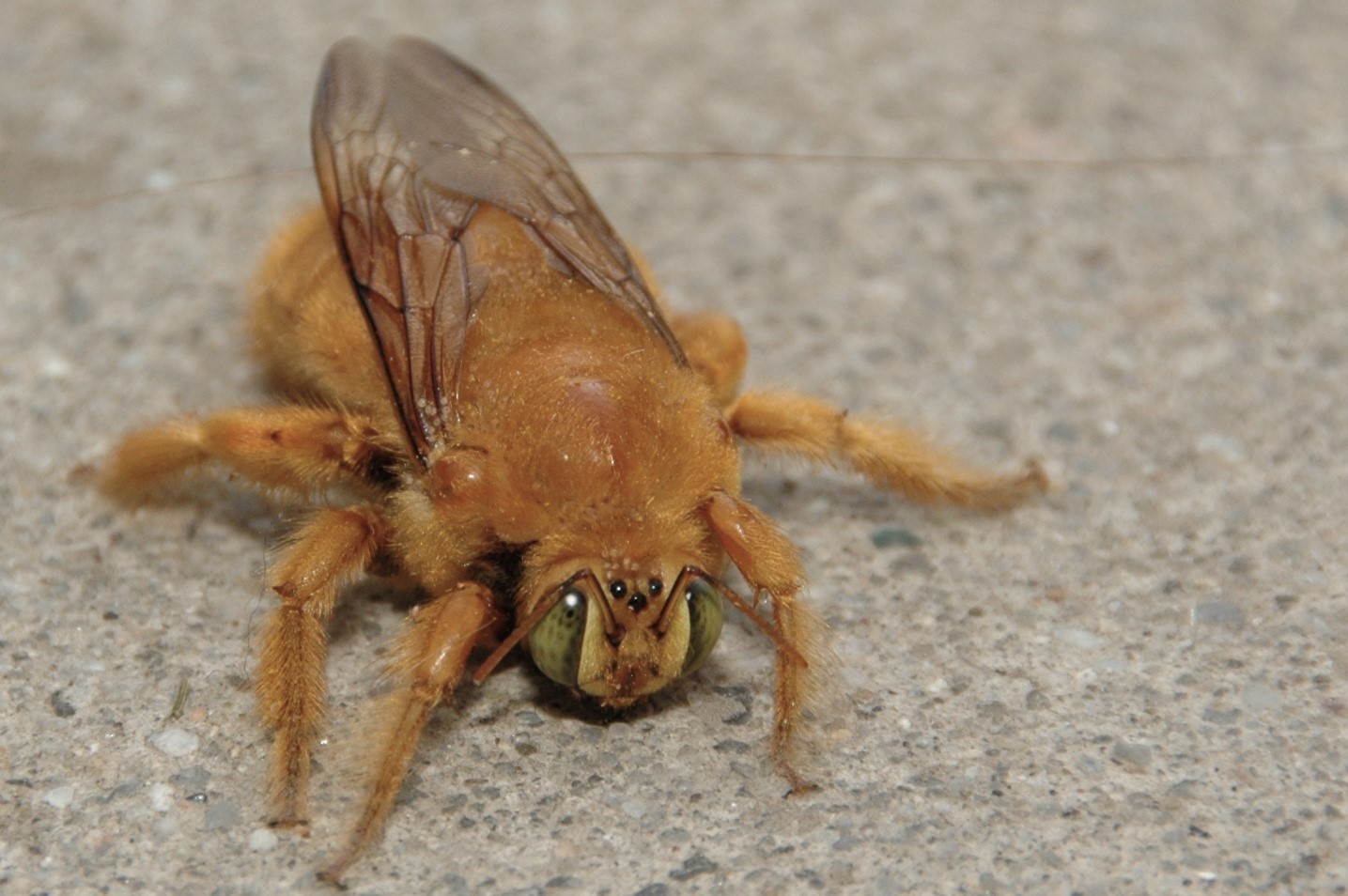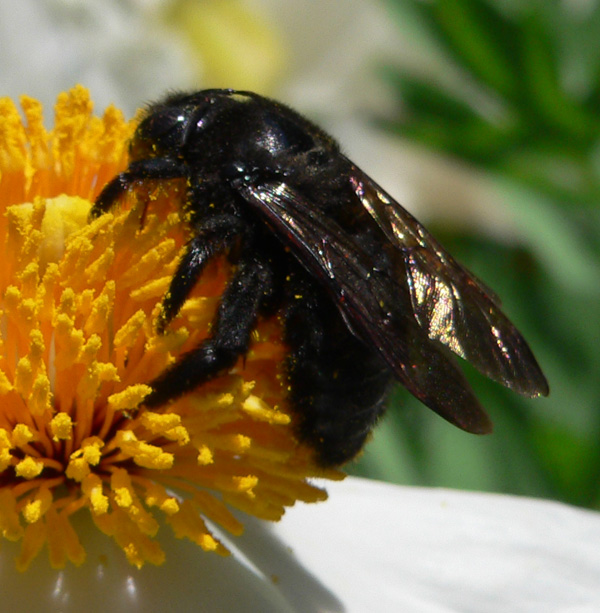Habitat
How do they get their name?
Xylocopa varipuncta, also known as the carpenter bee, gets its common name from the habitat it chooses to live in. The name Carpenter Bee can apply to a handful of species in the X. genus. The other more well-known species is X. virginica which is known to be in Missouri (University of Missouri Extension 2007). X. varipuncta is found more in west coast areas like California and studies have been conducted on its choice of nest location in regards to reproduction in Tucson, Arizona (Minckley 1990).
Where do I find them?
Most people find the insect flying around wooden structures of their
home. The bee seems to prefer certain structures such as the edges
of roofs, decks, and gables of their homes
(University of Missouri Extension 2007). They also
seem to prefer wood that is untreated and unfinished softwoods
including redwood, cypress, Douglas fir, mimosa, ash, white pine,
dead wood on trees, and cedar woods (Carpenter Bees) for constructing their nests
but you may also find them in wood that is a harder wood or is
treated and finished.
What is the nest for?
The way they construct their nests is the factor that really gives
rise to the name “Carpenter Bee”, they use their strong jaws to
tunnel through wood and off of the main tunnel, which can be several
feet into the wood, they create sub tunnels. The females use the sub
tunnels to lay their eggs and do this by building a large pollen
ball to provide food for her offspring. She then deposits an egg
near the pollen ball and seals the sub tunnel off using chewed wood
from the excavation (ncsu.edu). Unlike termites,
X. varipuncta do not consume the wood, rather they simply chew
it up and spit it out in order to create a nest (Texas A&M Agrilife
Extension 1989).
Behavior around nest
Male and female
carpenter bees also seem to have a specific behavior when around
their nests. The males are very aggressive and will fly in the path
of an intruder in attempts to scare them away; however, the
aggressiveness of the male bee is just a bluff as they have no
stingers to actually do damage with. On the contrary, female
carpenter bees do have stingers but very rarely will they sting. The
only way to get a female to sting you is to agitate it or handle it
(Ukag 1994). They are otherwise docile in nature and care more about
their offspring than the nest itself.

